2005

Anyone's Internet
for Free

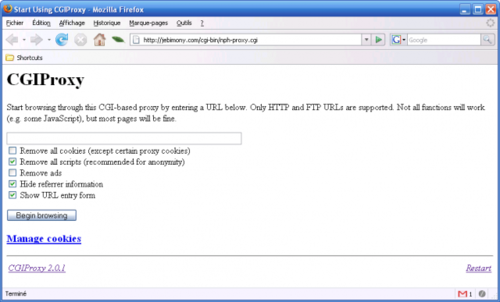
High school is an interesting time: sometimes you wanted to learn, other times it felt better to slack off instead of study. Of course, the best way to do so at school was fire up some Flash games or the early internet videos of the time. However, the teachers did not find these distractions humorous and sought to end student access to these sites by installing a firewall. Suddenly the major sites were cut off. What is a high-schooler to do now! Why not make a website which houses these games, one that is not blocked by a firewall? Or better yet, create a web proxy that can circumvent these draconian protections.
The Homebrew Website
Enter, Kirkserver.edu.ms, it was all things to all people: flash games, flash videos, streaming videos and a web-based proxy. I even used it as an early cloud-based storage drive for my homework, those types of sites were not common back then. Though it was mostly me who used it, I did share it with some friends. I even boasted to some of the teachers, they were mostly impressed that I had the self-drive to learn.
The original site was actually made with Microsoft Frontpage, it was a fine program, but not as good as Macromedia Dreamweaver which I would later love; both of these programs no longer exist. Adobe (who absorbed Macromedia) does still offer Dreamweaver, but for a steep subscription price. Microsoft replaced Frontpage with Expression Web, but that too was discontinued. There is no longer an equivalent Microsoft product. Granted I edit my HTML directly, without relying on a WYSIWYG anymore, which can be done with any good text/code editor.
My first site was full of IE'isms and very clunky. But it had animated gifs and marquees. There was even a catchy Sloganizer TM, which surprisingly is still online. Most of my sites over the years were built on freely available templates, this is really noticeable here as each sub-page used a different template!
The Kirkserver Flash Games page has been brought back to life!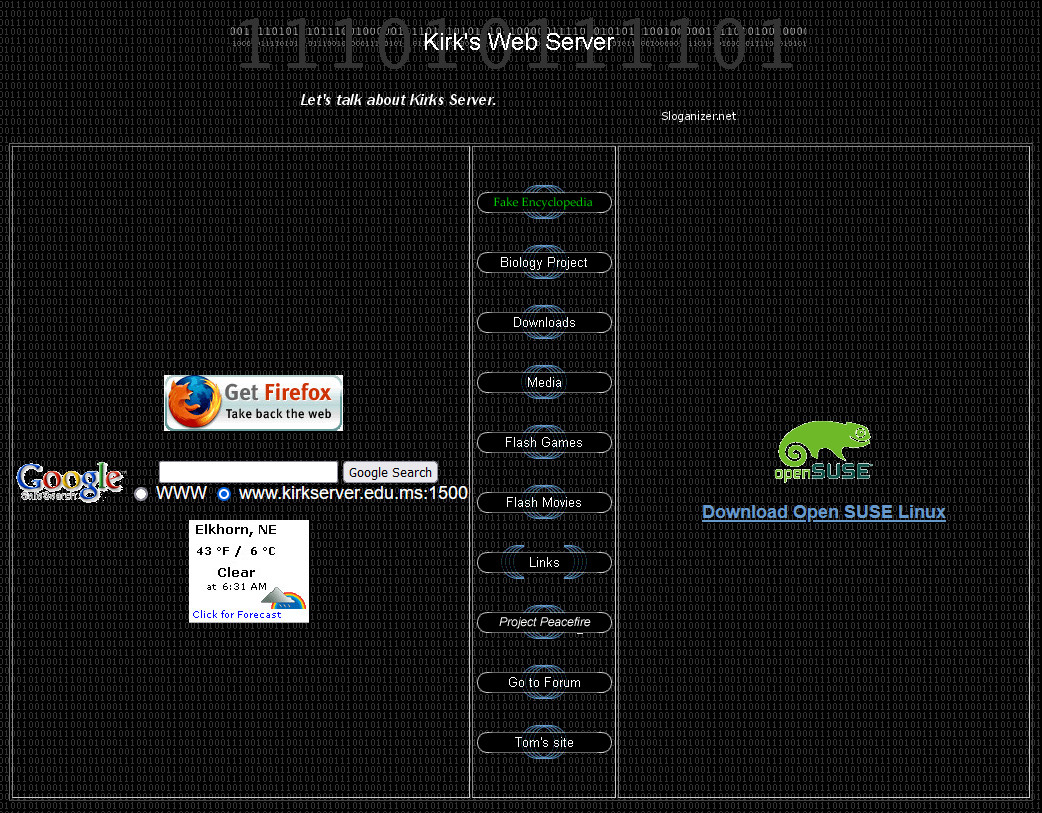
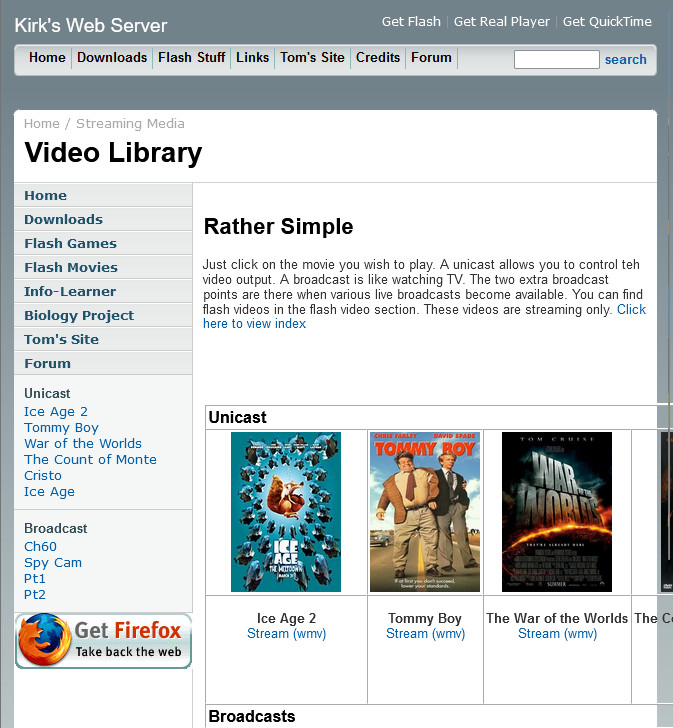
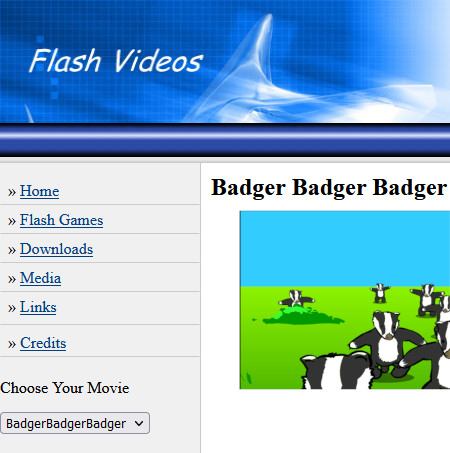
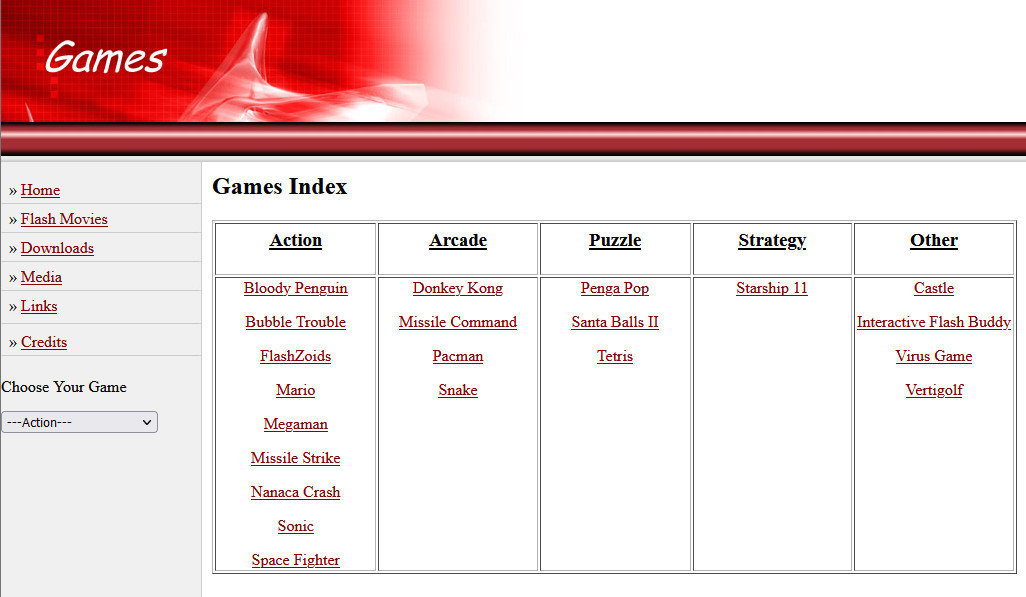



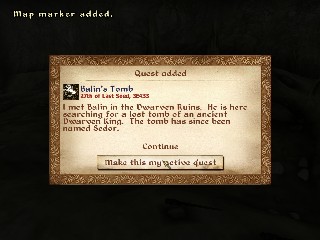
 A side note: I made a sequel mod for Skyrim (circa 2012) featuring all the
Dwarves from the Hobbit. I didn't publish it partly because it was an extension of
an existing mod, and partly because I included actual music from the Hobbit movie which
had just been released (we have a lame thing called copyright in the USA).
My brother maintains that I did in fact accurately capture in the dwarven NPCs,
the appearance of their counterpart in the Hobbit movie.
A side note: I made a sequel mod for Skyrim (circa 2012) featuring all the
Dwarves from the Hobbit. I didn't publish it partly because it was an extension of
an existing mod, and partly because I included actual music from the Hobbit movie which
had just been released (we have a lame thing called copyright in the USA).
My brother maintains that I did in fact accurately capture in the dwarven NPCs,
the appearance of their counterpart in the Hobbit movie.